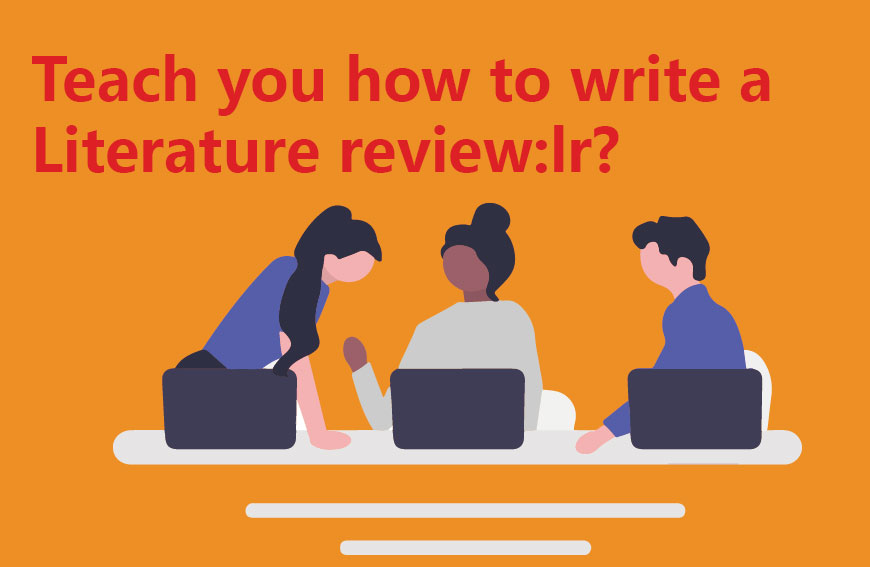The most important step in writing a paper is the literature review. A solid and comprehensive literature review is the key to the success of this paper. I’m sure many graduate students are now struggling with how to write a thesis. In this note, I will break down the literature review section of my thesis and discuss how to write a critical and logical literature review that will provide a solid foundation for your thesis.
What is a literature review?
Definition:A critical summary of existing research on a topic
Why is LR important?
The LR is actually divided into three parts.
⇒ gives you a better understanding of the TOPIC, what are the known ideas and findings.
⇒ provides the reader with a critical overview, letting them know “what did you find?
⇒ find out what is missing, the research gap, also known as “innovation”.
So how should you prepare for LR?
There are five steps that teach you how to write a Literature review.
1. Use a database (this could be Google scholar, PubMed, Scopus, UCL databases, etc.). , enter keywords and find information relevant to you.
2、Find literature related to your topic.
For example, if your topic is to discuss the impact of M&A payment methods on performance, then your keywords could be.
M&A or M&A and payment method or cash or stock or hybrid performance or stock price.
Evaluate and filter the documents found in your search. This can be achieved by.
3. type.
cite count Citation Count.
If the cite count is high, the source is probably very important in the field, so you should include it;
4, Abstract an abstract.
Quickly read the abstract to get a general idea of the main idea and results of this article and see if it is what you want;
5, Reference list bibliography.
You can also look at the appropriate bibliography, which cited information may also be useful.
Themes, debates and gaps: After identifying your subject literature database, you need to pay attention to your connections with different literature.
These connections could be.
A trend/pattern of change in theory, methodology or results: e.g. the literature of the last century predominantly used xxx methods, but in recent years
Yyyy method is the preferred method
Theme change: e.g. research on social media may have previously focused on platforms such as fb, but now research is more on visual social media platforms such as ins/snapchat.
debates or contradictions.
For example, xxx’s study found that A has a negative effect on B, but yyyy’s study found that A and B are not related.
influential studies.
What can we focus on to change the dominant view in the field, e.g. the classic apple falling, which is a revolutionary piece of literature.
Gaps.
It is very important for you to find out what the gaps are in the field. That’s very important. I’ll write another one later.
Framing the writing of LR. Once the literature and point of view are clear, you can start writing LR.
There are usually four writing frames: the
Chronological.
Chronological, from going to the latest publication to writing.
Thematic.
Write according to the topic. For example, according to the payment method: cash payment; stock payment; compound interest payment. Or by type of company: private, state-owned, etc.
Methodological.
According to different research methods.
Theoretical.
According to different theories or models.
Once you have decided on a framework, you can start writing according to this framework.The structure of LR is similar to that of an ordinary essay, which also needs an opening topic and a conclusion.
Introduction.
Clearly explain the purpose and focus of this LR. In this section, you need to restate your research question and submit to.
A brief overview of what you will be discussing; emphasise the timeline of the topic (e.g. much of the recent literature focuses on XX); and then
Emphasise gaps in the literature (e.g. although there are many studies on XXX, few researchers have taken Y into account).
Body:The main part can be divided into different subsections with reference to
4. Remember to label them with subheadings so that the reader can quickly grasp the key information.
In this section, I have four suggestions for you:.
Summarise and synthesise.
You need to make one main point and then give an overall view in relation to the different documents. Remember to show similarities and differences when summarising.
Analysis and interpretation.
Remember not to simply list other people’s ideas, but add your own interpretations and discuss what the definitions mean for the document as a whole or for the topic.
Critical assessment.
Criticality is very important. Remember to identify and discuss the strengths and weaknesses of the findings.
Structural paragraph.
Coherence is very important. All your sentences and paragraphs should be able to stick together and logically present your ideas and findings. So be sure to use some transitions and themes to keep your writing more organised. For example, how to reach a consensus in light of this, etc.
conclusion.
A concluding sentence summarises the main points of your literature review.




